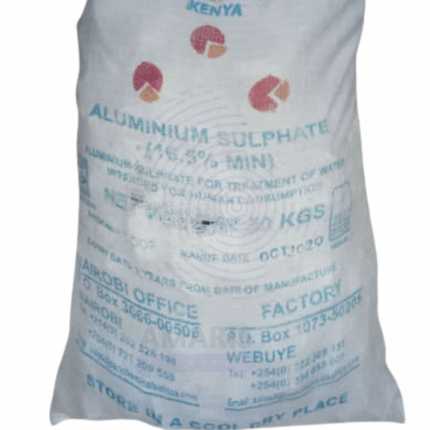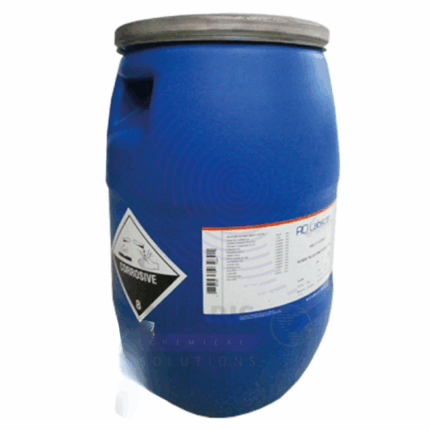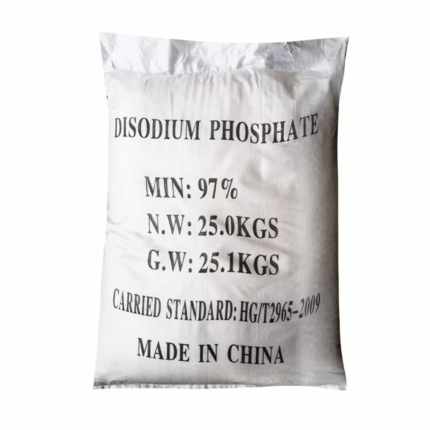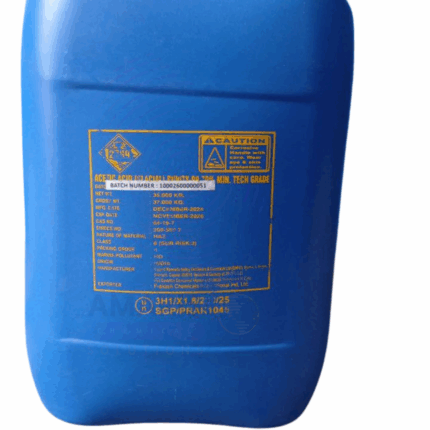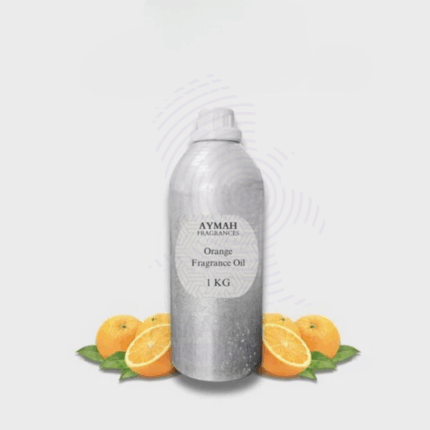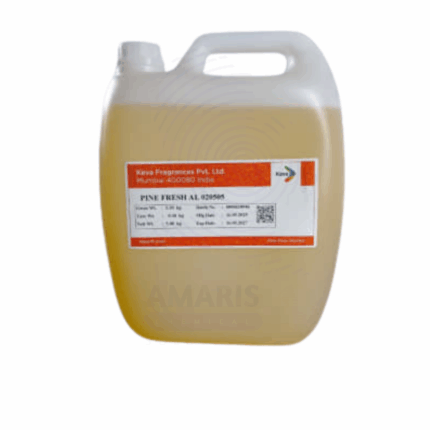Salcromo
Whatsapp Order
Salcromo is a specialty chemical used primarily as a corrosion inhibitor and surface treatment agent for metals. It helps prevent rust and corrosion on metal surfaces, enhancing their durability and lifespan. Salcromo is widely applied in industries such as metal finishing, automotive, and manufacturing to protect steel, iron, and other metals from environmental damage and oxidation.
Category: Industrial Additives
Tags: Chemical manufacturing, Chromium Salts, Leather tanning agent, Salcromo
Description
Table of Contents
Toggle
Salcromo
Primary Uses
- Metal Treatment & Protection
- Used as a corrosion inhibitor in metal finishing processes to protect steel and iron components.
- Applied in surface treatment baths to improve adhesion of subsequent coatings and paints.
- Enhances resistance of metal parts to rust, especially in automotive and machinery manufacturing.
- Manufacturing & Industrial Applications
- Utilized in the production of metal parts and tools to prolong service life by reducing oxidation.
- Incorporated in formulations for metalworking fluids and coolants to prevent corrosion during machining.
Secondary Uses
- Construction
- Used in protective coatings for structural steel to improve durability in harsh environments.
- Electronics
- Applied in surface treatments for metal parts in electronic devices to prevent corrosion and ensure conductivity.
KEY PRODUCT FEATURES
1. Basic Identification Attributes
- Chemical Name (IUPAC): Varies depending on formulation; generally chromate-based corrosion inhibitor
- Common/Trade Name: Salcromo
- CAS Number: Varies by formulation
- HS Code: 2825.90 (inorganic chemical mixtures)
- Synonyms: Chromate corrosion inhibitor, metal passivation agent
2. Physical & Chemical Properties
- Physical State: Liquid or powder depending on formulation
- Color & Odor: Typically yellow-green to amber; mild chemical odor
- Solubility: Soluble in water or aqueous solutions
- Stability: Stable under recommended storage conditions
3. Safety & Hazard Attributes
- GHS Classification: Often classified as hazardous due to chromate content (carcinogenic, mutagenic risks)
- Toxicity: Toxic if ingested or inhaled; potential carcinogen
- Exposure Limits: Strict occupational exposure limits; use with protective equipment
4. Storage & Handling Attributes
- Storage Conditions: Store in a cool, dry, well-ventilated area away from incompatible substances
- Container Type: Supplied in sealed drums or containers
- Shelf Life: Stable for 1–2 years if stored properly
- Handling Precautions: Use gloves, respirators, and protective clothing; avoid skin and eye contact
5. Regulatory & Compliance Attributes
- Complies with relevant chemical safety regulations (e.g., REACH, OSHA)
- May be subject to hazardous waste disposal regulations due to chromate content
6. Environmental & Health Impact
- Biodegradability: Poorly biodegradable; environmental persistence
- Ecotoxicity: Highly toxic to aquatic life; avoid environmental release
- Bioaccumulation: Potential for bioaccumulation due to heavy metal content
SAFETY HANDLING PRECAUTIONS
Safety Handling Precautions
- PPE Required: Gloves, respirator, goggles, and protective clothing mandatory
- Handling Guidelines: Use in well-ventilated areas; avoid inhalation, ingestion, and skin contact
- Storage Measures: Keep containers tightly closed and stored in a dry environment away from reducing agents and acids
First Aid Measures
- Inhalation: Move to fresh air; seek immediate medical attention if symptoms develop
- Skin Contact: Wash thoroughly with soap and water; seek medical advice if irritation or burns occur
- Eye Contact: Rinse with plenty of water for at least 15 minutes; seek urgent medical care
- Ingestion: Do not induce vomiting; seek immediate medical attention
Firefighting Measures
- Fire Hazards: Non-flammable but may release toxic fumes when heated
- Extinguishing Media: Use water spray, foam, dry chemical, or CO₂
- Special Precautions: Wear full protective gear and self-contained breathing apparatus
- Hazardous Combustion Products: Chromates, oxides of sulfur and nitrogen
Related products
Aluminium Sulphate Alum Rock
$ 0.20
Aluminium Sulphate Alum Rock, commonly referred to as simply Aluminum Sulphate or Alum Rock, is a white crystalline solid widely used across various industries. It is primarily known for its strong coagulating properties, making it essential in water purification, wastewater treatment, and paper manufacturing. When dissolved in water, it reacts to form aluminum hydroxide, which binds with impurities and suspended particles, facilitating their removal. In addition, alum rock finds applications in dyeing, tanning, and as a mordant in textile industries. It has astringent and antiseptic properties, making it useful in cosmetics and personal care products such as deodorants and styptic pencils. Its cost-effectiveness and multifunctionality make it a staple chemical in environmental, industrial, and consumer sectors.
Disodium Hydrogen Phosphate
Disodium Hydrogen Phosphate, also known as sodium phosphate dibasic, is an inorganic salt widely used as a buffering agent, emulsifier, and food additive. It appears as a white, odorless crystalline powder or granules that are highly soluble in water and alkaline in nature. It plays a crucial role in maintaining pH balance, stabilizing formulations, and supplying essential sodium and phosphate ions in various industries including food, pharmaceuticals, water treatment, and agriculture.
Disodium Phosphate
Disodium Phosphate, also known as sodium phosphate dibasic, is an inorganic compound widely used for its buffering, emulsifying, and chelating properties. It commonly appears as a white, odorless crystalline powder or granules that are highly soluble in water and alkaline in nature. Disodium Phosphate plays a vital role in regulating pH, improving stability in formulations, and providing essential sodium and phosphate ions. It finds extensive use across food processing, pharmaceuticals, water treatment, agriculture, and industrial applications.
Glacial Acetic Acid Tech grade
Glacial Acetic Acid Tech grade is a clear, colorless liquid with a pungent vinegar-like odor. It is a less refined form of acetic acid primarily used for industrial and technical applications rather than food or pharmaceutical uses. Typically available in concentrations ranging from 80% to glacial (99-100%), it serves as a crucial chemical reagent, solvent, and intermediate in various industrial processes.
Lead Nitrate
Lead Nitrate is a white crystalline inorganic compound composed of lead and nitrate ions. It is highly soluble in water and commonly used in laboratories and industrial applications as an oxidizing agent, in the preparation of other lead compounds, and as a reagent in chemical synthesis. Lead Nitrate is known for its strong oxidizing properties and must be handled with care due to its toxicity and environmental hazards.
Mango Liquid Flavor food grade
Mango Liquid Flavor Food Grade is a vibrant and natural-tasting flavoring agent that replicates the sweet, juicy, and tropical essence of ripe mangoes. This high-quality liquid flavor is specially formulated for use in food and beverage applications, providing a consistent and authentic mango aroma and taste. Its excellent solubility and stability make it ideal for use in beverages, confectionery, dairy products, baked goods, and other food formulations, enhancing product appeal with a fresh tropical note.
Orange Fragrance Oil
Orange Fragrance Oil is a highly concentrated aromatic oil that delivers a fresh, vibrant, and sweet citrus scent reminiscent of ripe oranges. It is formulated for use in a variety of applications including personal care products, household items, and air fresheners. This fragrance oil offers excellent scent throw, stability, and compatibility with different base materials such as waxes, solvents, and emulsions. Its refreshing aroma makes it a popular choice for perfuming soaps, candles, detergents, and cosmetic formulations, providing a natural and uplifting citrus experience.
Unipine Fragrance Water Soluble
Unipine Fragrance Water Soluble is a fresh, crisp, pine-based aromatic compound formulated for use in water-based systems. It replicates the clean, invigorating scent of pine forests with subtle herbal and woody undertones, making it a popular choice in air fresheners, cleaning agents, and personal care formulations. Its water-soluble nature allows for easy incorporation into aqueous products without the need for emulsifiers, ensuring even fragrance dispersion and stability. Unipine fragrance offers excellent performance in both homecare and hygiene applications where a natural, clean aroma is desired.


 Preservatives(food)
Preservatives(food) Flavor Enhancers
Flavor Enhancers Acidulants
Acidulants Sweeteners
Sweeteners Antioxidants
Antioxidants Colorants(food)
Colorants(food) Nutraceutical Ingredients (food)
Nutraceutical Ingredients (food) Nutrient Supplements
Nutrient Supplements Emulsifiers
Emulsifiers
 Collectors
Collectors Dust Suppressants
Dust Suppressants Explosives and Blasting Agents
Explosives and Blasting Agents Flocculants and Coagulants
Flocculants and Coagulants Frothers
Frothers Leaching Agents
Leaching Agents pH Modifiers
pH Modifiers Precious Metal Extraction Agents
Precious Metal Extraction Agents
 Antioxidants(plastic)
Antioxidants(plastic) Colorants (Pigments, Dyes)
Colorants (Pigments, Dyes) Fillers and Reinforcements
Fillers and Reinforcements Flame Retardants
Flame Retardants Monomers
Monomers Plasticizers
Plasticizers Polymerization Initiators
Polymerization Initiators Stabilizers (UV, Heat)
Stabilizers (UV, Heat)
 Antifoaming Agents
Antifoaming Agents Chelating Agents
Chelating Agents Coagulants and Flocculants
Coagulants and Flocculants Corrosion Inhibitors
Corrosion Inhibitors Disinfectants and Biocides
Disinfectants and Biocides Oxidizing Agents
Oxidizing Agents pH Adjusters
pH Adjusters Scale Inhibitors( water)
Scale Inhibitors( water)
 Antioxidants(cosmetic)
Antioxidants(cosmetic) Emollients
Emollients Fragrances and Essential Oils
Fragrances and Essential Oils Humectants
Humectants Preservatives
Preservatives Surfactants(cosmetic)
Surfactants(cosmetic) Thickeners
Thickeners UV Filters
UV Filters
 Fertilizers
Fertilizers Soil Conditioners
Soil Conditioners Plant Growth Regulators
Plant Growth Regulators Animal Feed Additives
Animal Feed Additives Biostimulants
Biostimulants Pesticides (Herbicides, Insecticides, Fungicides)
Pesticides (Herbicides, Insecticides, Fungicides)
 Active Pharmaceutical Ingredients (APIs)
Active Pharmaceutical Ingredients (APIs) Excipients
Excipients Solvents(pharmaceutical)
Solvents(pharmaceutical) Antibiotics
Antibiotics Antiseptics and Disinfectants
Antiseptics and Disinfectants Vaccine Adjuvants
Vaccine Adjuvants Nutraceutical Ingredients (pharmaceutical)
Nutraceutical Ingredients (pharmaceutical) Analgesics & Antipyretics
Analgesics & Antipyretics
 Analytical Reagents
Analytical Reagents Solvents(lab)
Solvents(lab) Chromatography Chemicals
Chromatography Chemicals Spectroscopy Reagents
Spectroscopy Reagents microbiology-and-cell-culture-reagents
microbiology-and-cell-culture-reagents Molecular Biology Reagents
Molecular Biology Reagents Biochemical Reagents
Biochemical Reagents Inorganic and Organic Standards
Inorganic and Organic Standards Laboratory Safety Chemicals
Laboratory Safety Chemicals Specialty Laboratory Chemicals(Special Laboratory Equipment)
Specialty Laboratory Chemicals(Special Laboratory Equipment)
 Demulsifiers
Demulsifiers Hydraulic Fracturing Fluids
Hydraulic Fracturing Fluids Scale Inhibitors(oil)
Scale Inhibitors(oil) Surfactants(oil)
Surfactants(oil) Drilling Fluids
Drilling Fluids
 Dyes and Pigments
Dyes and Pigments Bleaching Agents
Bleaching Agents Softening Agents
Softening Agents Finishing Agents
Finishing Agents Antistatic Agents
Antistatic Agents
 Admixtures
Admixtures Waterproofing Agents
Waterproofing Agents Sealants and Adhesives
Sealants and Adhesives Curing Compounds
Curing Compounds Concrete Repair Chemicals
Concrete Repair Chemicals Anti-Corrosion Coatings
Anti-Corrosion Coatings
 Surfactants(cleaning)
Surfactants(cleaning) Builders
Builders Enzymes
Enzymes Solvents (Cleaning)
Solvents (Cleaning) Fragrances
Fragrances
 Electronic Chemicals
Electronic Chemicals Catalysts
Catalysts Lubricants
Lubricants Photographic Chemicals
Photographic Chemicals Refrigerants
Refrigerants Automotive chemicals
Automotive chemicals Pyrotechnic Chemicals
Pyrotechnic Chemicals
 Biodegradable Surfactants
Biodegradable Surfactants Bio-based Solvents
Bio-based Solvents Renewable Polymers
Renewable Polymers Carbon Capture Chemicals
Carbon Capture Chemicals Wastewater Treatment Chemicals
Wastewater Treatment Chemicals
 Pigments
Pigments Solvents(paint)
Solvents(paint) Specialty Coatings
Specialty Coatings Binders/Resins
Binders/Resins Additives
Additives Driers
Driers Anti-Corrosion Agents
Anti-Corrosion Agents Functional Coatings
Functional Coatings Application-Specific Coatings
Application-Specific Coatings
 Fresh Herbs
Fresh Herbs Ground Spices
Ground Spices Whole Spices
Whole Spices Spice Blends
Spice Blends Dried Herbs
Dried Herbs
 Leavening Agents
Leavening Agents Dough Conditioners
Dough Conditioners Flour Treatments
Flour Treatments Fat Replacers
Fat Replacers Decoratives
Decoratives Preservatives(baking)
Preservatives(baking)
 Plasticizers & Softeners
Plasticizers & Softeners Reinforcing Agents
Reinforcing Agents Adhesion Promoters
Adhesion Promoters Vulcanizing Agents
Vulcanizing Agents Antidegradants
Antidegradants Blowing Agents
Blowing Agents Fillers & Extenders
Fillers & Extenders Accelerators & Retarders
Accelerators & Retarders





